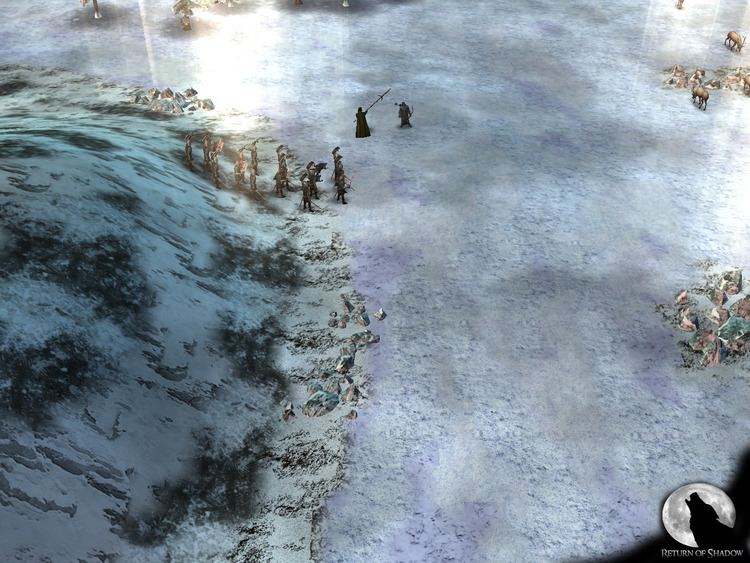Type Icy region | Location Northeast of Eriador | |
 | ||
Other name(s) Northern Waste,
Northerland | ||
Forodwaith ostara official video
In J. R. R. Tolkien's fictional universe of Middle-earth, Forodwaith was the name both of a region and the people who lived there.
Contents
- Forodwaith ostara official video
- Forodwaith revenge of mjolnir
- Geography
- The Lossoth
- The Last King of Arthedain
- Interpretations
- References

Forodwaith revenge of mjolnir
Geography
The Sindarin name Forodwaith translates loosely as Northern Waste and literally as Northern Realm, and was a name for the land north of the Iron Mountains of the First Age. Little was known of it, except that despite lying scarcely 100 leagues north of the Shire, it was an area of immense cold. This was due to its proximity to the Gap of Ilmen, and Morgoth's evil cold, which emanated, in ancient times, from his place of dwelling, and lingered still into the Third Age.
After the War of Wrath and the breaking of the World, the Iron Mountains were mostly destroyed, and the area of Forodwaith that lay north of Eriador became known as Forochel, together with the great ice-bay and cape that carried the same name.
The Lossoth
The Men of Forodwaith were a strange folk apparently unrelated to the Edain. During the Third Age their descendants were known as the Snowmen of Forochel or Lossoth. In Unfinished Tales it was stated that they could glide on ice by tying bones to their feet. The Lossoth made their houses of snow, and possessed "carts without wheels", probably sleighs. They believed that inhospitable weather was caused by the Witch-king of Angmar, and feared his supposed ability to cause storms so greatly that when at first King Arvedui arrived seeking help, they remained aloof. They dwelled mainly on the Cape of Forochel, whose location made them inaccessible to their foes, "but they often camped on the south shores of the bay at the feet of the Mountains."
The Last King of Arthedain
Arvedui, last King of Arthedain, fled to the Ice-bay of Forochel after his realm was destroyed by Angmar. The King approached the Lossoth and attempted to barter with them for supplies with jewels, in which the Lossoth had no interest. Fearing the wrath of Angmar, the Lossoth were at first unwilling to help. Eventually, the decision to aid the King was made in part out of fear of violence, and partly out of pity for the ragged and emaciated condition of the King's fellowship. The Lossoth provided the men with some food, and constructed snow huts for them to wait out the winter.
When word reached Círdan that Arvedui had fled from his kingdom, he dispatched a vessel to Forochel to seek him. In March the ship reached the Ice Bay of Forochel, yet could not reach the shore as the ice floes were still thick and only just beginning to break and thaw. Now friendly to Arvedui, the Lossoth transported him and his men to the waiting ship on their sledges. Awed and afraid of the vessel, the like of which none of them had seen before, the Lossoth warned the King not to try to sail south in such frigid conditions. Against their advice Arvedui boarded the ship, which became surrounded by ice. Eventually the ship's hull was crushed, and he was drowned in the ice-bay, together with the palantíri of the North.
However, the ring of Barahir, which Arvedui had carried, survived. He left it with the chief of the Lossoth in thanks for their aid, and the Dúnedain later paid to recover it.
Interpretations
A portion of Forochel is depicted in the MMORPG The Lord of the Rings Online: Shadows of Angmar. Introduced in April 2008, a new zone around The Ice-Bay of Forochel was added, while the Epic quest line follows the last days of Arvedui, Last King of Arthedain. The game developers depict the Lossoth skating and pushing sledges on ice in accordance with J.R.R. Tolkien's notations. However, new elements were introduced in the depiction of the Lossoth, namely, their ability to tame and ride to war on mammoths. In addition, many aspects of their language, culture, and appearance are derived from or inspired by that of the Finnish, Sami, and Inuit people.
